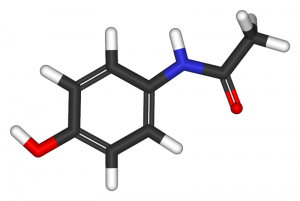WEDNESDAY, 28 DECEMBER 2011
Paracetamol (acetaminophen) has long been a household painkiller, found in many cold and flu medications. It was first discovered as far back as the 1890s and has been sold as a painkiller since the 1950s. However, the mechanism by which the drug acts has only recently been elucidated, by a group of researchers at King’s College London in collaboration with scientists from Lund University.They found that the key element responsible is the TRP1A protein. This is an ion channel found on the surface of sensory nerves, which helps to mediate the flow of current through nerve cells. By altering this current, paracetamol hinders the transmission of pain signals from the sensory nerves to the brain where the pain is recognized.
The key experiment was conducted in mice. Two types of mice, one with and one without the TRPA1 channel, had their paws placed on a slightly hot surface. The researchers measured how much time passed before the mice withdrew their paws, indicating a feeling of pain. When given paracetamol, only the mice with TRPA1 kept their paws on the hot surface for longer, suggesting that they were experiencing pain relief (analgesia).
Paracetamol itself does not act directly on the protein; instead, a break-down product of the drug, NAPQI, activates TRPA1. This was unexpected, given that TRPA1 activation has also been shown to induce pain. NAPQI is formed in the spinal cord, where it has its analgesic effects, but also in the liver, where it is toxic. This explains why paracetamol overdoses can have lethal consequences.
The scientists found that certain other chemicals were also able to activate TRPA1 when injected into the spinal cord, without the harmful side effects of NAPQI. This has important implications, because it could mean that newer pain-relief treatments can be developed that are as effective as paracetamol without sharing its toxic effects.
Written by Ayesha Sengupta

